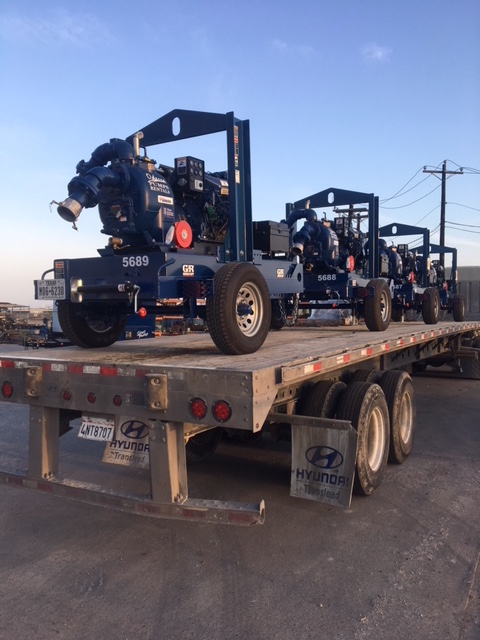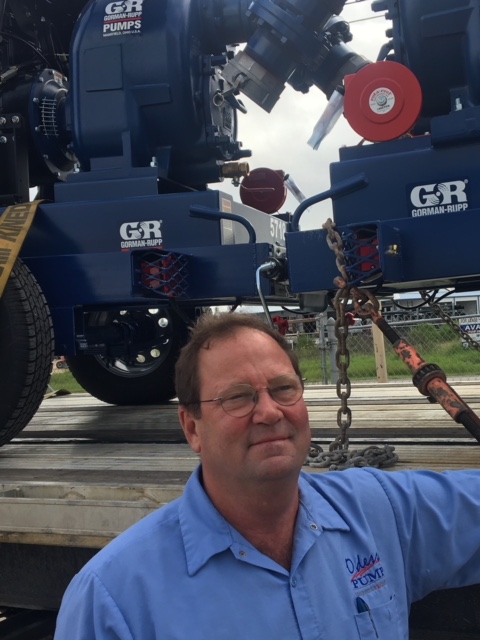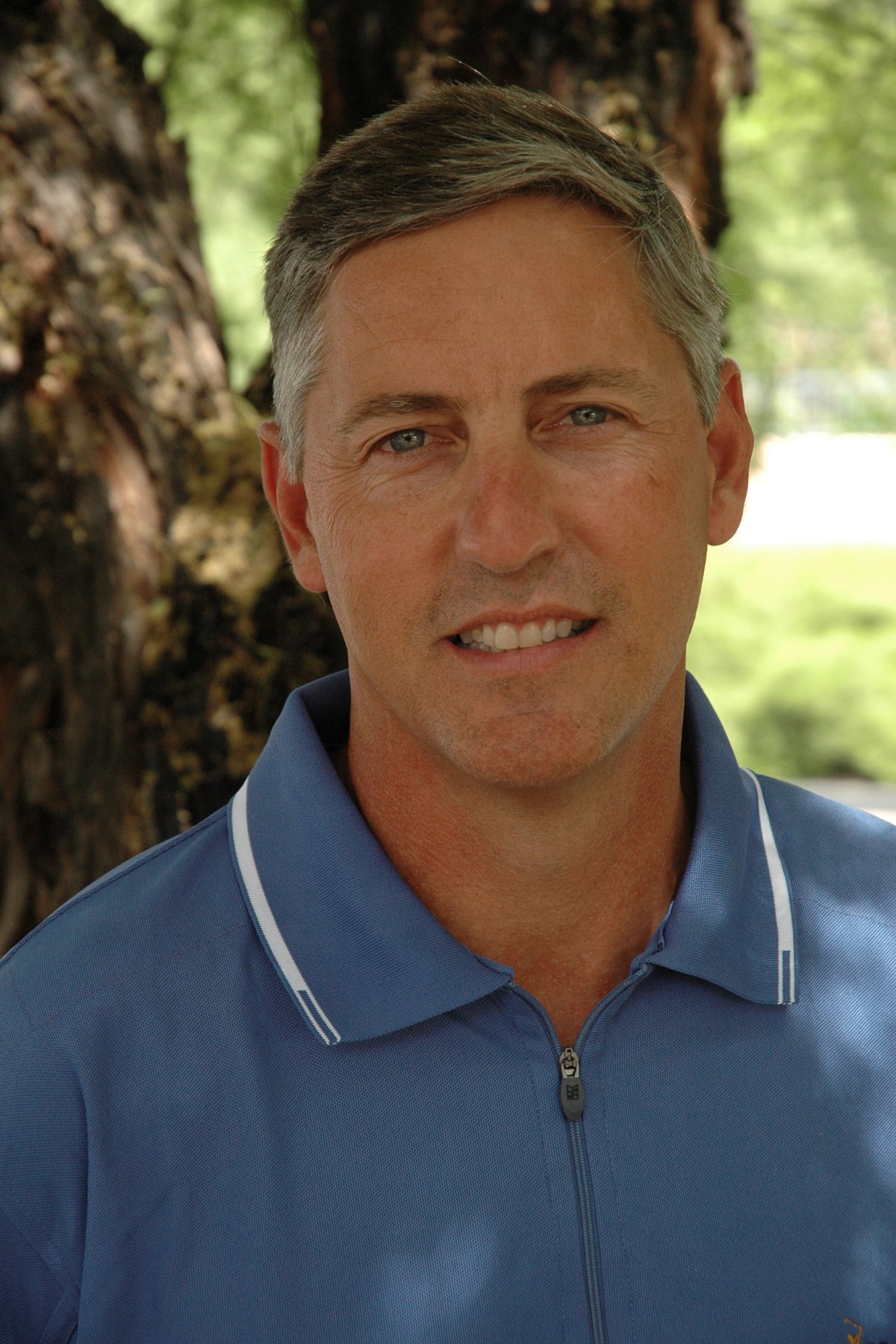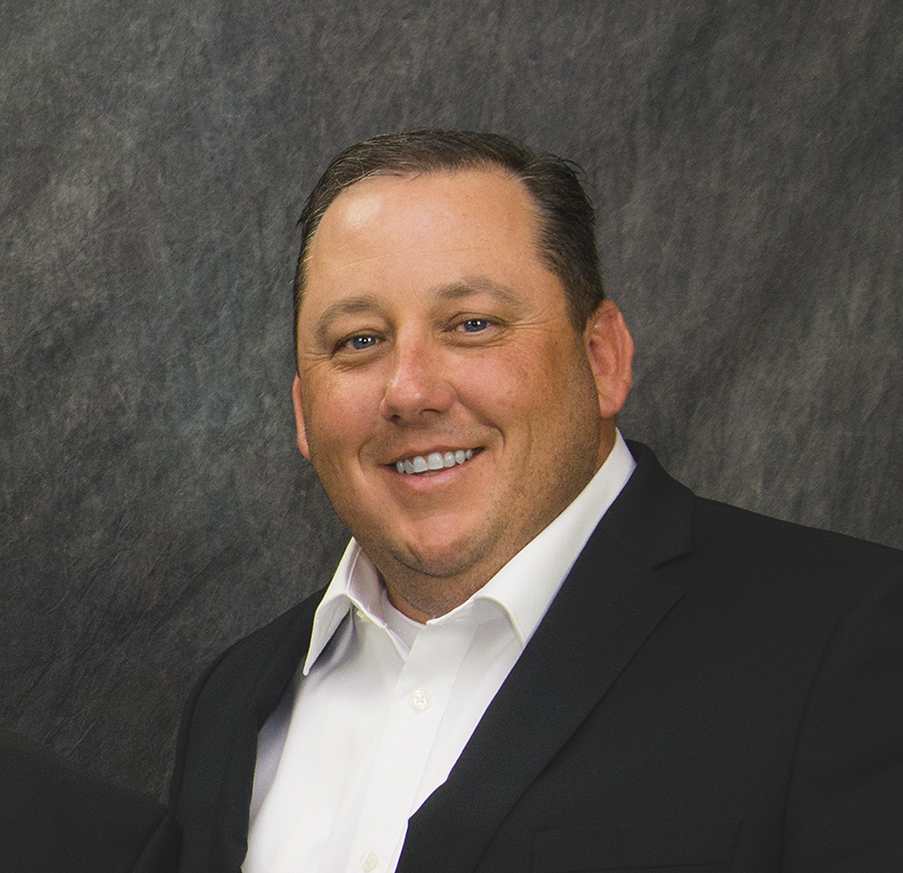 As the uptick continues in the oil and gas industry, other sectors, like rentals, do their part to push things forward. A panel review from rental industry experts yields insights on how to adapt to changing times in the oilfield and how the rental business has fared as a whole.
As the uptick continues in the oil and gas industry, other sectors, like rentals, do their part to push things forward. A panel review from rental industry experts yields insights on how to adapt to changing times in the oilfield and how the rental business has fared as a whole.
By Shanti Terry
As the oil and gas industry rises again from a downturn, its services sector does so as well. Within that sector, the tool and equipment rental industry plays an important part in the process recovery, as they furnish the equipment and servicing necessary to keep things moving at an often furious pace. How well have rentals rebounded? We’ve rounded up opinion from managers in that niche’s front lines.
More specifically, we put together a panel, as we tapped the opinions of rental industry experts from the Permian Basin and surrounding areas to get a picture of their operational status.
Any look at the rentals industry gives some perspective on the larger industries it serves. When rental activity is up, business is generally good.
All our sources agreed that the Permian Basin is a thriving market for rentals and, based on the previous and current year’s performances, they have high expectations for the future. As for other aspects of the rental business, there was much to learn and discuss. We inquired with them about how they deal with competition, hard times, and the ever-changing world of technology.
Meet the Panel:
The six rental industry panel experts we spoke to have a pool of experience that totals more than 80 years’ worth. All serve the oil and gas industry, with many others serving additional markets as well.
Chad Wolf is the Vice President of the Power Generation and Rental Solutions segment of Gravity Oilfield Services. He’s been with Gravity for over five years and previously worked at Warren Cat for 12 years. Gravity Oilfield Services is a combination of Light Tower Rentals, founded in 1994, and Globe Energy Services, which was founded in 2004. Gravity operates in Water Solutions and Infrastructure, Power Generation and Rental Solutions, and Wellbore Solutions.
“We have deep resources and proven capabilities. Our employees are well-trained, passionate, and customer-oriented. We’re close to customers, with a large footprint of offices and service centers throughout the Permian Basin and other important basins. We’re growth-oriented, with financial flexibility and an active customer base.
Jud Hall is Rental Division Manager for Odessa Pumps, a DistributionNOW company. He’s been with the company since 2002. Odessa Pumps was founded in 1980. It sells, services, packages, and rents pumps for the oil and gas, municipal, industrial, and marine markets.
“Everything that we sell, we rent. We take pride in providing good equipment and service to our customers. They like our equipment. We are the largest distributor nation-wide for Gorman Rupp, National Oilwell, Sandpiper, and Fairbanks-Morse pumps.”
Andrew Patterson is the Director of Rentals at ASCO. He’s been with the company for over a year now and worked an United Rentals for ten years prior to that. ASCO is a family-owned and -operated company that was established in 1960. The company is a full-service dealership with an in-house rental division that offers everything from small tools to large dirt equipment, and aerial equipment as well.
“We are a faith-based company. Our core purpose is to be a blessing to others, to our employees, our customers, our communities, and our stockholders. Our core values are the main reason I came to ASCO: honor God, develop people, pursue excellence, and grow profitability.”
Randy Heckenkemper is a Partner at Site Solar, a lighting solutions company which has partners that have been working together since 2012. He’s been with the company since 2015. The company provides all-solar and hybrid automated light towers and generators to a variety of industries.
“We service businesses that want to save money on labor and fuel, reduce carbon emissions, and to help protect our environment.”
Bryce Puckett is General Manager of Rentals for Kirby-Smith Machinery. He’s been with the company for the last 16 years and has 20 years of rental industry experience as a whole. Kirby-Smith Machinery began in 1983 and is a distributor of heavy equipment and cranes throughout the central United States. Kirby-Smith serves the construction, mining, and industrial markets.
“Kirby-Smith is a locally owned dealer for Komatsu, Wirtgen, Hamm, Kleemann, Vogele, and National Crane. We have one of the largest fleets of earthmoving, compaction, paving, aggregate processing, and lifting equipment in the region.”
Dustin Morgan is COO for Yellowjacket Oilfield Services. He’s been in the industry for 16 years. Yellowjacket was founded in 2012. The company offers fishing and rental, wireline, and Thru Tubing services.
“Yellowjacket is one of the largest and fastest growing service companies in the United States. We are solely focused on highly-skilled specialty rental and services. Our expansive inventory of tools and equipment is leveraged by some of the most respected specialists in their field.”
The Competition—Standing Out From the Crowd:
While speaking with our panel, we were reminded of the fact that the rentals industry is an intensely competitive market. Its numerous players offer hundreds of items and services from which to choose. In an area like the Permian Basin, where there is an abundance of work, standing out from the competition is a necessity for survival. Just because the Permian Basin is booming and there’s work available all around doesn’t mean one rental company can get that work over another without an edge on the competition. We asked our panel of experts what sets their companies apart and learned that customer service and staff are two important, interrelated factors that can make or break relationships with existing and potential customers. Apart from that, there are elements like seamless integration, quality of equipment, and safety that have a role in setting oneself apart as a company.
Customer Service:
Focusing on customer satisfaction is crucial, and those in the rental industry know that very well. If a customer has an unpleasant experience while renting with a company, they are likely to share that experience with others, and that can potentially set off a chain of unpleasantries that no rental company is looking to maneuver through. “Our main focus is our customers,” said Puckett, from Kirby-Smith. “We are able to utilize the resources of our factory-trained dealer service teams to help maintain and repair our fleet.”
Providing great customer service also leads to loyalty from existing clients, a consideration cited by Hall, at Odessa Pumps. As he observed, “We have the same customers with us since we started the rental business. When they get busy, they call us, and we get busy. Even when employees leave certain companies to go work elsewhere, they often still use us at that new company.”
The actions that prompt loyalty are a matter of providing a worry-free experience for clients, as best described by Heckenkemper at Site Solar. He stated, “Site Solar forms partnerships with local companies that share our commitment to providing high quality customer service by making their Site Solar light tower rental truly a hands-free experience for the customer. We believe that to best utilize the new technology our product offers, we deliver, set up, and program the units—and provide all upgrades, updates, and maintenance for the length of the rental agreement.”
Staff
Customer service and staff are joined at the hip, but in the end, staff carries a bit more weight. How can a company provide exceptional customer service without the proper staff in place? They can’t. “It’s very simple,” said Morgan from Yellowjacket. “Our people are by far the thing that sets us apart from our competitors. By hiring and retaining top-tier talent that are well versed in many aspects of the service industry, we have the added benefit of accessing a wealth of experience across all of our operating areas. The team approach we employ daily allows us to work more effectively—which, in turn, creates added value to our customers.”
Hall (Odessa Pumps) remarked that teamwork is of the utmost importance. “I have some really great regional managers that do a great job out there. They handle the day in and day out movements. I couldn’t do it without them. We are only as good as the people who service our customers. That is the strength and fiber of our company.”
Wolf, from Gravity, stressed that placement of staff is a key aspect. “We are oil-field focused,” he said. “Our offices [and staff] are located near where our customers are working.” He noted that Gravity has invested heavily in training its mechanics. “We created Gravity Technical Academy as part of our Central Repair Facility in Cleburne, Texas. We provide courses for mechanics 2-3 weeks per month. Many of our mechanics are EGSA certified.”
Integration
Setting a company up as a one-stop-shop was another factor mentioned by our panel as a means of standing out from competitors. Odessa Pumps and ASCO expressed pride in the way that each has worked to make all the parts whole for their customers.
Odessa Pump’s Hall said, “We are the largest pump rental company that is not a stand-alone pump rental company. Out there, you’ll see some very large, national pump rental companies, and that’s all they do. They rent pumps. At Odessa Pumps, we sell, we package, we repair, we service, and we sell parts. We integrate the pump rental aspect into to every one of our stores. We rent out everything that we sell. ”
Patterson, from ASCO, had this to say: “We are a full- service dealership with factory trained personnel who perform all the work, including warranty on all equipment in our rental fleet. We do all the work in-house and even work on some of our competitors’ equipment because we are a dealership for brands they carry. We also have a fully stocked parts department to support customers and our rental fleet.”
Safety
With OSHA standards looming just overhead, safety practices are yet another key for keeping customers and standing out as a reputable rental business in the industry. At ASCO, Patterson said that the company makes a name for itself by renting “choice-age” equipment. As he stated, “Our rental fleet equipment is 24 months or less in age. We keep a very young rental fleet for safety purposes to keep up with standards from OSHA. It also allows for fewer breakdowns.”
Wolf (Gravity), described their safety practices as a culture that’s part of the company.
“We are on a path to zero recordable incidents by focusing on education and prevention,” said Wolf. “We have monthly safety meetings at all our sites, as well as monthly online safety training completed by all employees and management. We also have a behavior-based safety observation program, designed to help our managers identify issues before they become problems.”
Weathering the Storms with Diversification, Fluidity, and People:
The rollercoaster ride that is providing service to the oil and gas industry can be daunting, but we found that our panel of experts think it to be worth the risk. As seasoned players in the game, they and the companies they work for know how to ride out tough times, having learned through repetition and experimentation. We found that diversification, fluidity, and having the right people were our panel’s list of tools needed to survive a bust and come out on top when it’s all over.
Diversification
We’ve all heard the saying about never putting all your eggs in one basket. It’s about not risking all you have on one thing. The principle works for everyday people in their everyday lives, and, apparently, it works for companies too, including the rental industry. The panel repeatedly cited diversification as a means of getting through the storms of the market for oil and gas.
Morgan (Yellowjacket) said that the company has multiple service lines and service areas and they have been doing well so far. “Business has been great. We are experiencing month over month steady growth as a company across all service lines and service areas. Our business has evolved tremendously in the last five years. We have completely changed our service line offering in the last three years, now focusing on fishing and rental, wireline, and thru tubing.”
At Kirby-Smith, Puckett stated that the company has been refined by the dips and downturns of the market over time. “With our geographic and product diversity we certainly felt the effect of low oil prices and production in the Permian region, but we were able to maximize some of our other lines of paving, compaction, and aggregate production as a result of that. Although [we were] cautious during the downturn, we were able to actually grow our footprint with customers and diversify our customer base. In the end it was like a crucible—we came out refined and better than we did going in.”
It seems for the rentals industry that refinement through fire is difficult to withstand, but in the end it does purify. It also serves to help a company learn and progress better the next time. At ASCO, Patterson seemed to be in accord with Puckett’s assessment. He said, “We definitely saw a slowdown, but our markets not being in just oil and gas allowed us to weather those types of ups and downs with commercial construction and highway construction. We also have a fluid fleet.”
Fluidity
Fluidity in the rentals industry has everything to do with maximizing the utilization of equipment. Patterson explained the benefit of fluidity for ASCO, stating, “When things slow down, we are able to move fleet from the Permian to bigger city areas that haven’t slowed down during those times. Now, in recent times, we’ve been pouring a lot more fleet back into the Permian Basin, due to the uptick.”
Hall shared details about how Odessa Pumps measures a good year and fleet fluidity. “We’re just like everyone else,” he said. “We have some good years and we have some lean years. We’ve never had a year that we lost money. Still, some years are good growth years and others are not. Super-high utilization rates make for a good year. A low utilization rate is a lean year. We constantly analyze our market and we move units from branches that aren’t busy to those that are in order to keep our utilizations rates at their highest points.”
Where fluidity is concerned, diversification matters as well. The more locations and types of markets a company has, the better they can move equipment around to optimize their utilization.
The Right People
Both Gravity and Site Solar mentioned people as making a difference in how companies weather storms. Heckenkemper (Site Solar) said that the people they focused on from the very beginning were customers. “Site Solar began operations in 2016 with the mindset to start small and develop a strong, core group of repeat customers,” he said He went on to say that now they can also focus on helping those customers by providing self-sufficient systems so that customers don’t need employees to their lighting for them. As he said, “Companies we work with are in a labor crunch, unable to fill many open positions. We alleviate some of their burden; in fact, one of our largest customers has been able to reassign two full-time employees who were previously committed to turning lights on and off every day, and refueling with diesel multiple times a month. They were able to put those employees to work in a different capacity for the company.”
Wolf said that Gravity did experience a slowing of business during the most recent downturn, and that the company took that time to work with its people. Wolf stated, “The last five years has been a good example of the cyclical nature of our industry. It’s no secret that during the downturn of 2015-2016 business was very slow. There were lots of pressures to lower our rates. One of the things we did right was invest in our people. Lots of training. Making sure our equipment was properly maintained and ready to rent when the market turned around. This year, our challenge is meeting our customer demands for equipment, and finding and training enough people to help deliver and maintain that equipment.” Wolf went on to say that Gravity has seen a steady increase in demand from mid last year to present.
Technology and the “New” Oilfield: Adaptation is Key
Technological advancements have revolutionized the oil and gas industry as there are fewer rigs, but each one is more productive. With the introduction of pad and directional drilling came new ways to extract more oil faster, and at a fraction of the previous price. Frac pits are now of immense size and sand usage has massively increased. Technology introduced a “new” oilfield as it changed the way the industry operates forever. Advancements in the equipment carried by the rental companies has changed as well. Adaptation was a common response when we asked sources how these changes have affected them. Each has been pleased with the advancements so far with new developments such as self-automated equipment and cloud-based information sharing. All seem to look forward to what will come next in advances in equipment and the “new” oilfield as a whole.
Gravity
“From our perspective, the ‘new’ oilfield is about efficiencies,” said Wolf. “Drilling sites require more power for longer periods of time. The completions sites require more resources [especially water]. The production sites, which rely on artificial lift, also require more power. Most of these locations are in remote sites, away from cities, and consequently away from the power grid. Gravity can supply the power and water solutions required to the ‘new’ oilfield.”
Wolf said that technology has influenced how its customers do business, and how Gravity responds. He gave the company’s fleet of natural-gas-powered generators as an example of the adaptation required to serve the new oilfield: “In 2013, we placed our first NG Gen on rent—capable of running on field gas,” said Wolf. “This solved a huge issue for our customers—reducing the requirements for frequent re-filling a diesel fleet—and has addressed an emissions issue with cleaner-burning natural gas. Bringing this technology to market was an initiative and investment over several years. Being first to market gave Gravity a competitive edge, but it was soon copied by our competitors. We are fortunate to have developed standard operating procedures, mechanic training, and continuous improvements that have enabled our fleet to run at over 99 percent up-time.”
Yellowjacket
Over at Yellowjacket, Morgan mentioned offering packages as a way of adapting. He said, “The most obvious change that YJOS has learned and adapted to with this new model of drilling is how important it is to be able to offer our customers multiple services, more commonly referred to as “package” services. Being a niche, one-stop-shop has created great versatility for our company.”
Morgan also said that, where technology is concerned, the development of improved tools and specialized cloud-based software systems to support their operating structure are what lies ahead for the company. “Technology is greatly affecting certain aspects within our business. In order to adapt, we have begun to engage with engineers and manufacturing suppliers to help enhance tools within our service lines, as well as to implement software solutions to improve overall corporate performance.”
ASCO
ASCO’s Patterson said that the company has learned quite a bit from the oil and gas industry and vice versa as the new oilfield races ahead. “We take from each other, said Patterson. “We have to find ways to meet their expectations. In the past, rental companies were always trying to catch up, and now we are developing better relationships and, as these companies move, we can anticipate and understand when they’re about to pour into an area. That communication has really helped us to have the equipment at the right place at the right time.”
Patterson went on to say that he’s enjoyed seeing the technological advances in equipment. “Now, you can program a dozer to make a grade a certain degree to make a road and it just does the exact cut that you want. GPS and diagnostics have helped tremendously. For theft purposes, the GPS is great to locate the equipment. The equipment can now send us our hours and [inform us] when things need to be done, which helps everyone to have less down time.”
ASCO’s future customer portal system is another way the company is adapting to technology and the new oilfield. Patterson said, “Technology has also changed how we do business, with customer portals where they can log in to their accounts online and the equipment they rent, as well as invoicing. We’re going through an upgrade right now, and we will offer these things to our customers.”
Odessa Pumps
Hall talked about the need to learn and act quickly when adapting to the new oilfiled and technology. He said that responding to customers’ needs is everything. “We have been renting to the oil patch for quite some time, and we know if we don’t respond to the needs of today, our competitors will. We are able to design, build, and rent equipment to service that market.”
GPS and self-automation were among Hall’s favorite picks for technology that’s made the Odessa Pumps more productive. As he stated, “We currently use a lot of GPS to keep track of all the pumps we have. We also have some new technology with units that have auto-start. We can put float controls on them so that when the liquid rises, the machinery can sense that and pump it down and they turn themselves off. The new controls and GPS help us to be much more efficient.”
Site Solar
Heckenkemper said that environmental impact is always on their minds at Site Solar. Finding new ways of getting the work done without a damaging ecological footprint is how they’ve done, and are doing, their part to adapt to the new oilfield. He said, “O&G companies have made strong commitments to finding new ways to minimize their impact on the environment [as have we]. Each of our solar light towers can reduce carbon emissions by 30 metric tons when compared to diesel light towers. Our towers help new [and existing] oilfields by eliminating noise, diesel odor, and secondary containment issues, as well as the need for employee touches on light towers, as we provide all maintenance and upgrades for the length of the rental.”
Heckenkemper also said that OEMs (original equipment manufacturers) keep a close eye on technological advances. “Cloud-based information sharing, GPS-guided grading and boring equipment, and GPS tracking of assets have helped the industry.” He further explained that Site Solar’s light towers have GPS as well as data-logging capabilities. “We can monitor the daily solar charging and light discharge of each unit to make sure customers are maximizing the energy and light available. Our hybrid towers utilize an auto-start and -stop propane generator, show actual run time, and send push notifications when propane cylinders are close to needing to be replaced.”
Kirby-Smith
Puckett said that everything comes down to utilization. “Being in the rental business for decades, we can simply look at this trend like we do our equipment. We see the drillers, frac’ing companies, leaseholders, etc., all looking for better utilization of resources. Whether that is using local sand for frac’ing, drilling several wells on the same pad sites, or just simply finding a better way to do business, it is a natural progression.”
The way technology connects industries and the advancements in self-automation were of most interest to Puckett. He said, “Many of our earthmoving machines are close to full automation. Some of them right now basically only require an operator to move forward and reverse. There will come a time [sooner likely than we all anticipate] that earthwork projects will be fully automated. Just a few guys punching keys and maintaining equipment and fuel. It will revolutionize pad and frac pit development like you are already seeing it revolutionize the mining industry where fully autonomous units are already in operation.”
The Recap
Based on the insights we obtained from our panel, it appears that the rental industry is doing just fine. They can handle competition, as each finds its own way to stand out. All focus on customer service and the many ways to provide it—whether it be through proper integration, impeccably trained employees, or thorough safety procedures. The industry knows how to weather the storms and down times in the oil and gas market because they’ve done it before. They will diversify, they will fight low utilization with fluidity, and they will stay focused as they find and train the right people for the moment when the clouds break. Technology and new methods of operation in the oilfield are welcome challenges for them. They offer a chance to grow and enjoy progress as it is made with no end in sight.
Shanti Terry has been a freelance writer/blogger since 2011. She can be reached via email at: terryamoni@gmail.com.















